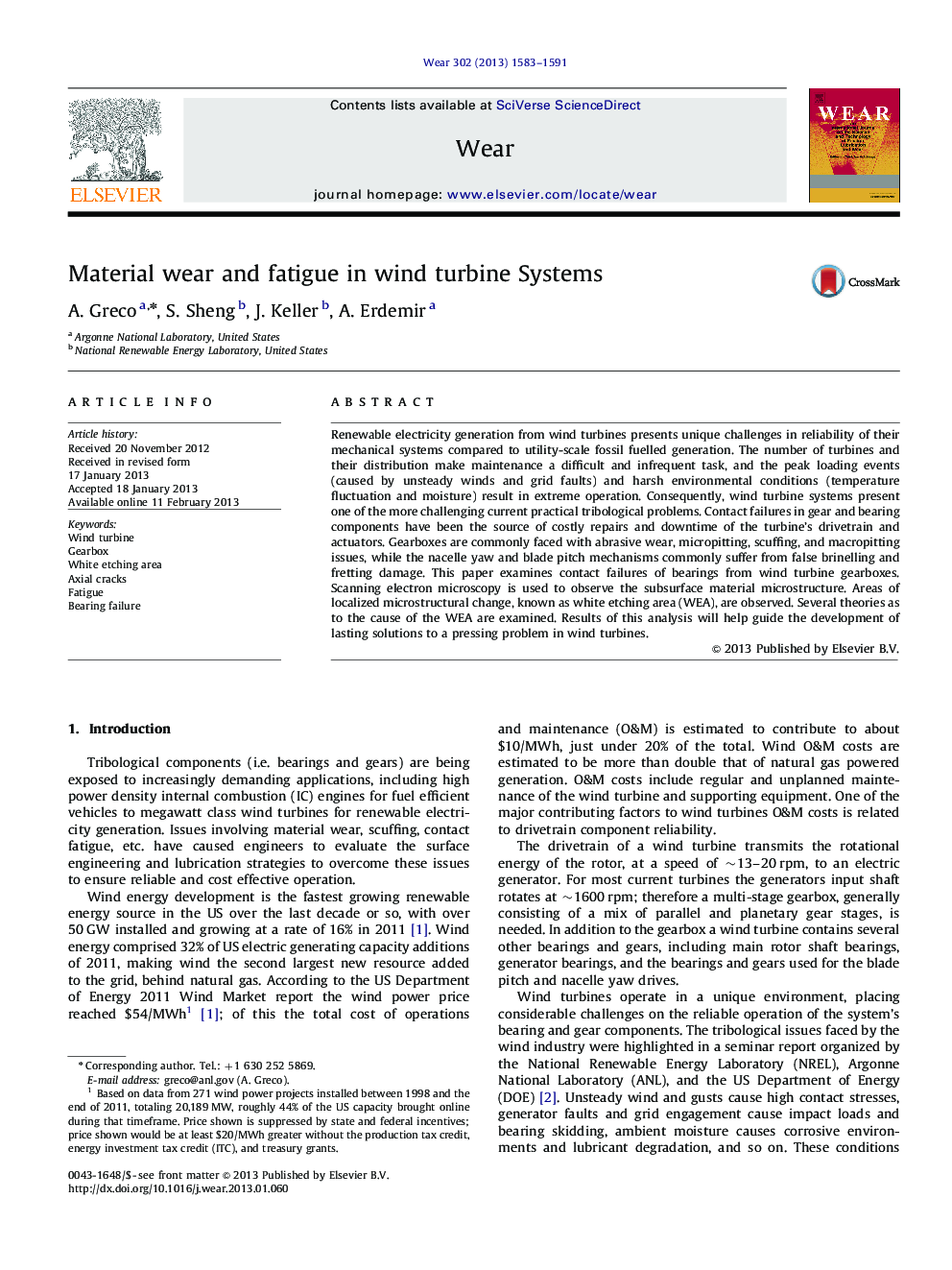| Article ID | Journal | Published Year | Pages | File Type |
|---|---|---|---|---|
| 617746 | Wear | 2013 | 9 Pages |
Abstract
Renewable electricity generation from wind turbines presents unique challenges in reliability of their mechanical systems compared to utility-scale fossil fuelled generation. The number of turbines and their distribution make maintenance a difficult and infrequent task, and the peak loading events (caused by unsteady winds and grid faults) and harsh environmental conditions (temperature fluctuation and moisture) result in extreme operation. Consequently, wind turbine systems present one of the more challenging current practical tribological problems. Contact failures in gear and bearing components have been the source of costly repairs and downtime of the turbine's drivetrain and actuators. Gearboxes are commonly faced with abrasive wear, micropitting, scuffing, and macropitting issues, while the nacelle yaw and blade pitch mechanisms commonly suffer from false brinelling and fretting damage. This paper examines contact failures of bearings from wind turbine gearboxes. Scanning electron microscopy is used to observe the subsurface material microstructure. Areas of localized microstructural change, known as white etching area (WEA), are observed. Several theories as to the cause of the WEA are examined. Results of this analysis will help guide the development of lasting solutions to a pressing problem in wind turbines.
Related Topics
Physical Sciences and Engineering
Chemical Engineering
Colloid and Surface Chemistry
Authors
A. Greco, S. Sheng, J. Keller, A. Erdemir,
